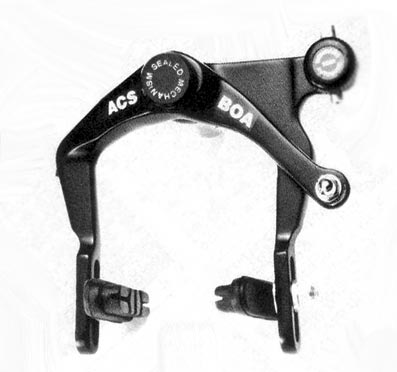BMX Action april 1981: We don't think centerpull brakes are the next great racing breakthrough, but maybe they're worth thinking about anyway. Take a look at the centerpull setup Baron's Bike Shop did for Buff. A Shimano Tourney centerpull caliper. A Dia-Compe quick release centerpull cable hanger. There are several ways to go if you go centerpull. For instance, DiaCompe makes a complete quick release centerpull brake unit-750 c 131 rear-that includes both pieces. Baron's coupled the cable hanger from that unit with the Shimano Tourney caliper. The DiaCompe centerpull calipers come in a choice of colors while the Shimano is available in silver only, it that's any concern. Obviously, most racers today are doing fine with standard sidepullers. So what does the centerpull set-up have to offer? Well, it's different. Besides that, centerpull also means even pull on both brake arms. That permits even separation of the brake shoes from the rim when the brake lever is released. An added bonus is the quick release feature that makes it really simple to slip off the rear wheel. Check out some sidepulls. Odds are you'll find that the brake shoe on the aide opposite the brake cable may not separate cleanly upon release of the brake lever. The centerpull is more difficult to set up. Don't try it alone unless you have three hands. But once it is set up, it does work as well or better than the usual sidepull set-up. Dat's it, If you're not having any brake problems, you probably won't be interested. Going centerpull won't knock live seconds oft your lap time, but you might want to check it out. Just remember, if you don't like it, you can't return to sender because it already is centerpull. But you can return to sidepull.

Came stock on 1986 Diamond Back Strike Zone's. They work on 990 mounts. Hutch made the freestyle fork whith mounts for these in 1986.
XC Power Brakes CB-6000, Roller Cam design, not interchangeable with cantilever mounts, threaded pad stud for adjustments, dual tension springs (long arm spring), compact design that doesn't protrude from the frame, licensed WTB/Cunningham design
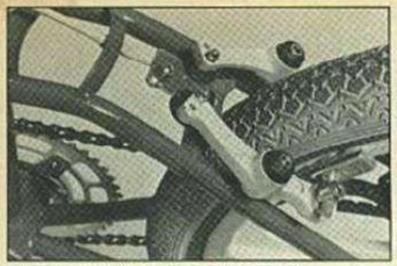
On the 1986 Diamond Back Strike Zone's.
There is no visible brake cable. Everything's tucked away inside the forks.
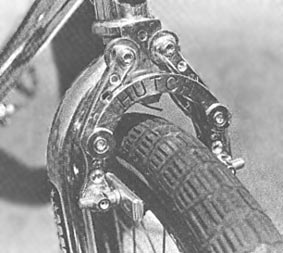
The numbers coencide with the reach of the arms ?
Soldat Bobby, novembre 2010: Dès 87, le Dia compé AD990 va devenir le standard pour le freinage arrière: chez Haro, GT, Dyno, Kuwahara, General, Hutch, Skyway, ... Chez Haro en free et en race, l'ad 990 est monté au dessus, chez skyway, c'est en haut pour la race, en bas pour le free. Je n'ai pas retrouvé l'article, mais je me souviens avoir lu que certains reprochaient la position de l'ad 990 sur les Haro free car il gênait pour le cherry picker, et d'autres reprochaient au contraire le montage par en dessous type GT pour certains squeaks sur la roue arrière.... (l'AD990 sera ensuite décliné en FS990 je pense en 1990-1991, pour mettre à l'avant, avec un serre-câble. on n'est plus en tirage central, mais en tirage de côté). Parallèlement à l'AD 990, nous pouvons citer aussi le frein à tirage centrale Dia compé AD 750, 760, 780 et/ou 790 (j'ai vu de nombreuses appellations, et j'ai pas vu de différences majeures) que l'on pouvait retrouver sur des bikes de free entrée/milieu de gamme dès 87 comme sur le starway freemaster ou GT performer.
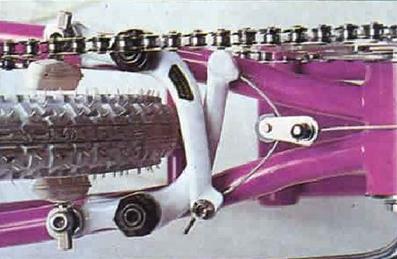
AD990 sur un GT free.
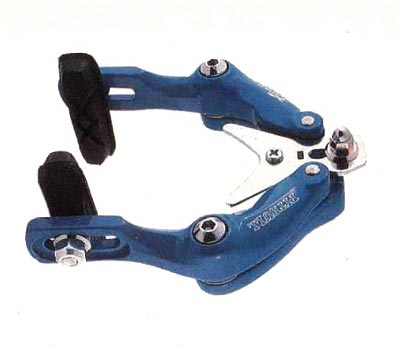
Ball bearing brakes.
ACS en arrêtera la production fin 1994.
Go october 1990: No slop. That's what ACS states on their press release about their Boa BMX/Freestyle model caliper brakes. Cold forged aluminium and loose ball bearings comprise the meat of these unique front and rear calipers, which are sealed to prevent unwanted foreign matter from creeping in. Available in silver or black at your favorite bike house.
